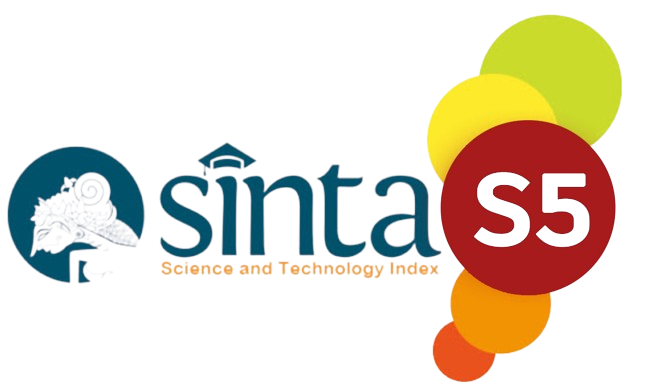REACT Strategy: An Innovative Approach to Improving Students’ Chemistry Learning Outcomes
Abstract
Keywords
Full Text:
PDFReferences
Algiranto, et al. 2023. PBM Assistance with the REACT Approach Based on Environmental Awareness in the Post-New Normal Era. CEMERLANG JOURNAL: Community Service. Vol. 5. No. 2. Pages: 203 – 211.
Farid, A. and S. Nurhayati. 2014. The Effect of Applying the REACT Strategy on Chemistry Learning Outcomes of Grade XI Students. Chemistry in Education. Vol 3. No.1. Pages: 36-42.
Gunter, Tugce, 2023. Using CBA REACT Strategy Supported by Crossword Puzzle Game on the Topic of Acid-Base Titrations. J. Sci. Learn. Vol. 6 No. 1. Pages: 87-99.
Ihsani, A.Z., et al. 2020. Application of the REACT Learning Model to Students' Critical Thinking Skills on the Concept of Solubility and Solubility Product. Journal of Chemical Education Innovation. Vol. 14. No. 1. Pages: 2498 – 2511.
Islamiati, N., et al. 2020. The Effect of Problem-Based Learning Model on Chemistry Learning Outcomes of Class X MS Students of SMAN 1 Kediri on Reduction and Oxidation Reactions Material. Chemistry Education Practice. Vol. 3. No. 2. Page: 112-115.
Karima, F and Kasmadi, I.M., 2015. Application of MEA and REACT Learning Models on Redox Reactions Material. Journal of Chemical Education Innovation, Vol 9, No. 1. Page: 1431-1439.
Pohan, H.M., et al. 2024. Exploring the World of Redox with REACT: An Innovative Learning Approach to High School Students' Learning Outcomes. EKSAKTA: Journal of Mathematics and Natural Sciences Research and Learning. Vol. 9 No. 2. Page: 299-306.
Quainoo, B.A., et al. 2021. Effect of the REACT Strategy on Senior High School Students' Achievement in Molecular Genetics. LUMAT: International Journal on Mathematics, Science and Technology Education. Vol 9. No. 1. Pages: 696–716.
Riyanto, A.I.2014. Implementation of REACT Learning Strategy to Improve Student Learning Outcomes. Journal of Electrical Engineering Education. Vol. 03 No. 02. Pages: 37- 46.
Sigiro, Mula, et al. 2024. The Effect of REACT (Relating, Experience, Applying, Cooperating and Transferring) Learning Model on Physics Learning Outcomes in Dynamic Electricity Material for Class X and Kinetic Theory of Gases for Class XI IPA Semester II of SMA Swasta Santu Fransiskus Aek Tolang. Journal of Natural and Applied Sciences Education (JPIPA&T).
Suleman, Nita, et al. 2022. The Effect of REACT Strategy on Students' Cognitive Learning Outcomes in Buffer Solution Material. Jambura Journal of Educational Chemistry. Vol. 4. No. 1. Pages: 44-50.
Supandi, et al., 2016. Analysis of Mathematical Representation by React Strategy on Realistic Mathematics Education. Anatolian Journal of Education. Pages: 1-12.
Taidi, Zurisaday., 2019. The Effectiveness of REACT Strategy (Relating, Experiencing, Applying, Cooperating, Transferring) on Student Learning Outcomes in Buffer Solution Material in Grade XI of SMA Negeri 2 Langowan. Oxygenius. Vol. 1, No. 2. Pages: 35-39.
Taraufu, A.F., et al. 2020. The Effect of Applying REACT Learning Strategy (Relating, Experiencing, Applying, Cooperating, and Transferring) on Student Learning Outcomes in Acid Base Concept Material. Oxygenius Journal of Chemistry Education. Vol. 2, No. 2. Pages: 52-57.
Utami, W.S. et al., 2016. React (Relating, Experiencing, Applying, Cooperative, Transferring) Strategy to Develop Geography Skills. Journal of Education and Practice. Vol. 7. No.17. Pages: 100-104.
Widiadnyana, Putu, et al. 2021. Application of REACT Strategy Assisted by Augmented Reality of Spatial Buildings on Mathematics Learning Outcomes. Syntax Literate: Indonesian Scientific Journal. Vol. 6. No. 12. Pages:
DOI: https://doi.org/10.24952/lavoisier.v4i1.13736
Refbacks
- There are currently no refbacks.
Copyright (c) 2025 Desy Rahmayanti Hasibuan, Rabiah Afifah Daulay

This work is licensed under a Creative Commons Attribution-ShareAlike 4.0 International License.







Lavoisier:Chemistry Education Journal is licensed under a Creative Commons Attribution-ShareAlike 4.0 International License. Copyright © 2022 Lavoisier: Chemistry Education Journal.All rights reserved.


